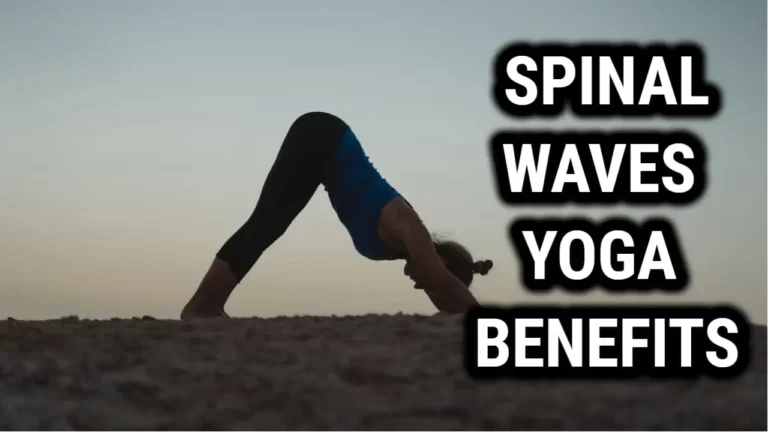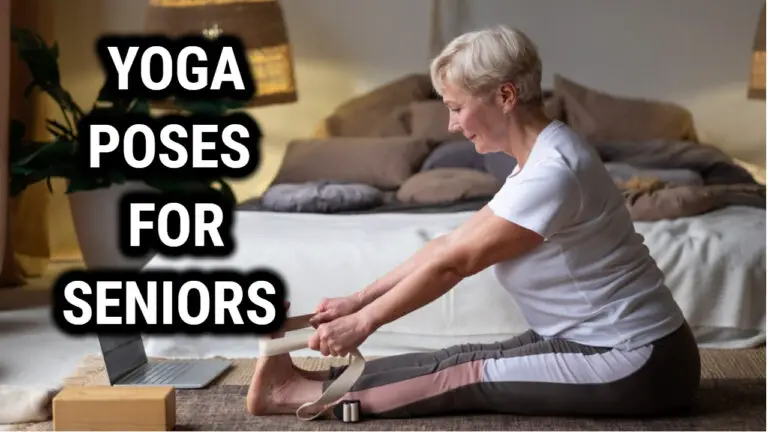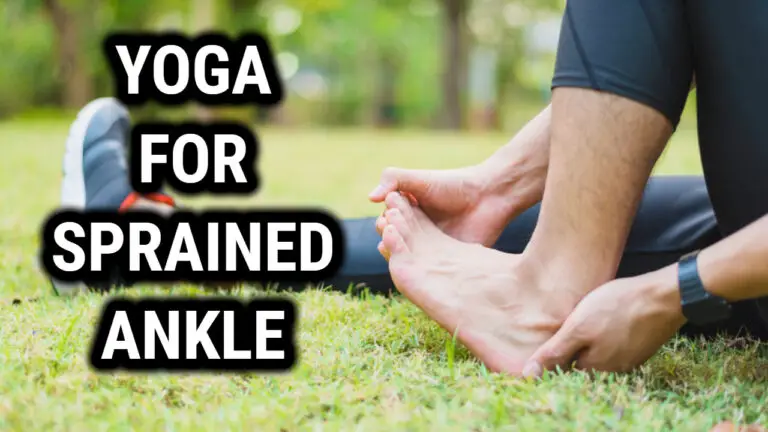Unwind And Relax – Bedtime Yoga For Deep Sleep

Are you struggling to get a good night’s sleep? Tired of tossing and turning in bed, unable to find peace and relaxation? Look no further than yoga! With this Bedtime Yoga Sequence, you’ll be able to unwind and relax, letting go of the day’s stresses and preparing yourself for a restful sleep.
This sequence includes stretching, massage, and focusing on your breath, along with specific poses such as knee reaching, bridge pose and more. In just a few minutes of practice, you’ll be able to transition into fish pose and end with a few moments of Shavasana.
So why not give it a try? Unwind and relax with yoga today and enjoy a peaceful night’s sleep.
Key Takeaways
- Bedtime yoga sequence, including stretching, massage, and breathwork, can promote a good night’s sleep.
- Creating a calming sleep environment and establishing a bedtime routine is important for deep and restful sleep.
- Specific poses, such as knee reaching, bridge pose, fish pose, and Shavasana, can help relax the body and mind before sleep.
- Practicing mindfulness, breath control, and final relaxation pose can aid in reducing stress, tension, and promoting peaceful sleep.
Overview
Take a journey to restful sleep through this bedtime yoga sequence, which offers a calming and soothing practice to help you unwind and relax.
Learn how to find a comfortable seat, do neck rolls, and relax your shoulders. Follow a stretching and opening sequence, with a foot massage and gentle leg movements.
Focus on your breath as you become mindful and let go of the day. End with a restorative posture, belly breathing, and surrender into relaxation.
This practice of bedtime yoga has many benefits, including calming and soothing for sleep, beneficial for mind and body, and stress reduction.
Specific poses include knee reaching towards the bottom left corner of your mat, stretching and massaging your booty, drawing your left knee down, optional shoulder stand, and fish pose.
Breathe and release, cover up with a blanket if desired, and connect to a sensation of peace.
Instructions & Sequence
Find a comfortable spot to settle into and do some neck rolls to help ease your shoulders. Incorporate yoga into your nighttime routine to unwind and relax before bed.
This yoga sequence will help your body relax and release any tension you’re carrying.
1. Start by stretching and opening the body, then move into a foot massage.
2. Follow with gentle leg movements and breathe deeply into each pose.
3. Focus on being present and letting go of the day’s worries.
4. As you move through the poses, you’ll find a restorative posture that feels good for you.
5. Take a few moments to do some deep lung breathing and relax, then surrender into the final relaxation pose.
You’ll be rewarded with the calming and soothing effects of this practice for bedtime, which is beneficial for both the mind and body.
A consistent bedtime routine that includes yoga can help you get a better night’s sleep and provide a sense of peace for the day ahead.
Focus
Focus your attention on your breath and allow yourself to be present in the moment. To help you unwind and relax, focus on deepening your breath control and connecting your body and mind.
With each inhale and exhale, let go of the worries of the day and allow your body to relax even more. By connecting to the rhythm of your breath, you can allow your body to feel more relaxed and create a connection to your inner peace.
Be mindful of each breath, and focus on guiding it through your body. Let the air fill your lungs, and use it to help you relax further. Feel your body letting go, and focus on the connection your breath can bring you.
As you focus on the breath, you can allow yourself to reach a deeper level of relaxation and surrender. Connecting body and mind through your breath will create a sense of calm and peace within.
Allow yourself to drift away and surrender to the power of your breath.
Ending
Take a moment to rest and surrender for the final relaxation pose. Ending your bedtime yoga session with a restorative pose can be a powerful way to help you relax and unwind. It can be beneficial to create a calming and soothing environment to help you get the best possible sleep. Here are some ideas to help you get the most out of your practice:
Importance of a Bedtime Routine:
- Establish a regular routine that helps you clear your mind and get into a relaxed state.
- Doing a few yoga poses before bed can help you create a sense of peace and calmness.
Tips for Creating a Calming Environment:
- Dim the lights and light some candles or use an essential oil diffuser.
- Put on some calming music or nature sounds to create a soothing atmosphere.
- Make sure the temperature of the room is comfortable and the bed is inviting.
By following these tips, you’ll be able to create a calming environment and reap the benefits of a peaceful and restful sleep. So take a few moments to relax and surrender to the final relaxation pose before ending your practice. Let go of the day and get ready for restful sleep.
Benefits
By incorporating a bedtime yoga sequence into your routine, you can experience the calming and soothing benefits of a peaceful practice for restful sleep. Practicing yoga at night can be incredibly beneficial for both your mind and body, allowing you to unwind and release the day’s stress.
As you focus on your breath and become mindful of the present, you can find peace and surrender to the moment. This can lead to deeper and more restful sleep, which is essential for your overall health and wellbeing.
The specific poses, such as knee reaching towards the bottom and stretching by crossing your left ankle over your right, help to open your body and massage your booty.
Ending with a restorative posture like Shavasana or Bridge Pose, or a more energizing shoulder stand or Plow Pose, can be extremely helpful to prepare for rest. Finally, adding a fish pose and covering up with a blanket can help you to relax even more.
By taking the time to practice a bedtime yoga sequence, you can reap the benefits of deep sleep and relaxation. This is essential for your body to function properly and stay healthy, as well as for your mental health.
The importance of winding down before bed cannot be overstated, so make sure to take the time to incorporate this into your nightly routine.
Mindfulness
Allow yourself to become mindful of the present moment and let go of the day’s stress. Practicing mindfulness can be a way to connect with the present moment and enjoy the stillness of the night. Cultivating awareness helps you to observe your thoughts and feelings without judgment.
Take a deep breath and be present. Quiet your mind. Feel your breath. Focus on yourself. Let go of worries. Release tension. Feel your connection to the world. Notice the darkness. Listen to the sounds of the night.
These simple practices can help you to relax and prepare for rest. Let go of the day and let your body and mind drift off to a peaceful sleep.
Knee Reaching
Gently reach your left knee towards the bottom left corner of your mat and feel the stretch. This knee reaching pose is an essential part of any bedtime yoga sequence that helps with relaxation and sleep. It helps to open the hips and create flexibility in the lower body. Here are some discussion ideas about knee reaching:
Modifications:
- If you have limited hip flexibility, try bending the left knee and pressing the sole of the left foot against the inside of the right thigh.
- Alternatively, you can practice the pose with your back against a wall.
- To focus on the stretch, you can hold onto the left foot with your right hand and press the foot firmly against the inner thigh.
Benefits:
- The pose helps to open the hips and stretch the inner thigh muscles.
- The knee reaching pose can also help to release tension and relax the body.
- Practicing the pose can help to improve flexibility in the hips and increase range of motion.
Relaxation:
- Once you’re in the pose, focus on your breath and relax your body.
- Visualize the tension leaving your body and imagine a feeling of calmness and relaxation.
- When you’re ready, slowly release the pose and relax into shavasana.
Stretch and Massage
From knee reaching, gently move to stretching and massage. Feel the benefits of stretching as you move your body to release tension and tightness.
You can massage your body to further enhance the relaxation. Start with your feet, kneading them with your fingertips, and then move up to your calves and thighs, using your palms to massage the area. Feel the tension in your muscles melt away as you massage. Use your thumbs to target tight spots and apply firm pressure to work out the knots.
Finish up with a light touch to your lower back and neck. Now, you’re ready to let go and surrender to a deep, blissful sleep.
Options for Shoulder Stand
Experience the calming benefits of the shoulder stand pose for a restorative bedtime yoga practice. The shoulder stand or ‘Sarvangasana’ in Sanskrit, offers many variations and modifications to help you unwind and relax.
You can start by lying flat on your back and slowly raise your legs up towards the sky, pressing your hands into your lower back for support. Once your legs are above your head, you can choose to keep your arms extended or rest your hands on your back. Make sure your shoulders are aligned with your ears and your neck is long.
To deepen the pose, you can draw your feet towards your face. To modify, you can place a bolster or block under your lower back to relax into the pose. Allow your body to relax and surrender, and take some deep breaths to calm your body and mind.
Enjoy the calming benefits of the shoulder stand for a restorative bedtime yoga practice.
Fish Pose
Try fish pose to help you relax and surrender for a restorative bedtime practice. Fish pose is a great way to release tension and prepare for a good night’s sleep. It’s beneficial for both the mind and body, providing calming and soothing effects.
This pose helps you to be mindful and let go of the day’s worries. To practice fish pose, start by walking your palms underneath your bum. Take a deep breath and draw your navel in towards your spine. Then, extend your legs out long. You can also try variations of this pose by crossing your ankles over each other.
Benefits of fish pose include increased relaxation, improved digestion, and better sleep. When done properly, this pose can help to reduce stress and anxiety. It can also help to open up the chest and shoulders, improving flexibility in the body.
Cover Up
After winding down with some simple breathing techniques, wrap up your practice with a cozy blanket for a comforting and peaceful sleep. The blanket will provide extra warmth and support for your body in the restorative postures. It’ll also help to create a feeling of contentment and security.
The benefits of covering up with a blanket are numerous. Not only will it keep you warm and comfortable, but it’ll also help to promote relaxation, reduce stress, and improve your quality of sleep. Wrap yourself up in the blanket and let your body relax into the postures. Feel the warmth embrace your body and let go of any lingering tension or stress. Allow the blanket to become a cocoon of comfort.
Take a few deep breaths and enjoy the feeling of security and peace. Let restorative postures, a cozy blanket, and a few deep breaths help you to wind down for a peaceful slumber.
Frequently Asked Questions
What type of yoga is best for bedtime?
A restorative yoga practice is best for bedtime. Try alternative poses at different levels to suit your needs. With deep breathing and focus, you can relax and surrender to a restful sleep.
How much time does this bedtime yoga sequence take?
This bedtime yoga sequence takes around 10-15 minutes, depending on how deeply you want to practice it. Benefits of shortening the sequence include positive effects on sleep, as well as the ability to be guided or unguided. Enjoy the benefits of yoga for bedtime!
Are there any modifications that can be made to the poses?
Yes, you can modify the poses to suit your individual needs. For example, you can adjust the intensity of the poses and vary the duration to accommodate your experience level.
Is this sequence suitable for beginners?
Yes, this sequence is suitable for beginners. Focus on mindful breathing and calming music to help relax the body. The poses can be modified to suit any level.
Is there a recommended number of times per week to practice this sequence?
Practicing this sequence regularly can bring meditating benefits and help you sleep. Use yoga props to support your body and increase comfort. How often? It depends on you – start with a few times a week and adjust as needed.





